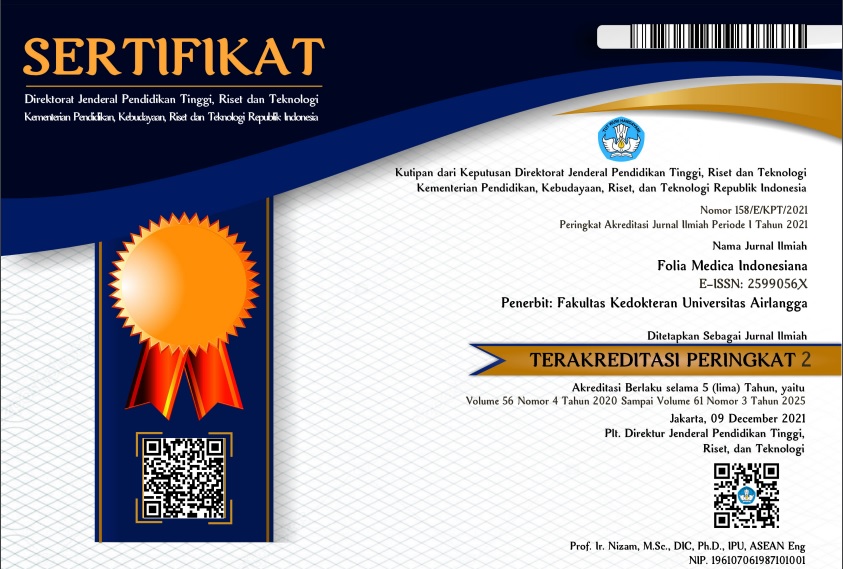ORCID ID
A2: https://orcid.org/0000-0002-8499-1600; A3: https://orcid.org/0000-0002-5922-5349
Abstract
Highlights:
1. The increased incidence of placenta accreta is contributed significantly by parity classification, a history of cesarean section, body mass index, and interbirth interval.
2. The findings of this study can be used as an additional reference in determining the risk of placenta accreta in pregnant women, specifically as an input in screening and antenatal care programs for pregnant women to provide early detection and appropriate management.
Abstract
The incidence of placenta accreta during pregnancy constitutes a serious problem in reproductive health. This complication has increased significantly over the last few decades, especially in developed countries where cesarean deliveries have also risen. Placenta accreta spectrum can cause very severe bleeding and potentially lead to other serious complications. The purpose of this study was to analyze the risk factors associated with the incidence of placenta accreta in women giving birth at Dr. Soetomo General Academic Hospital, Surabaya, Indonesia. This quantitative study used an analytical observational research design, specifically the case-control approach. The study sample was all mothers who gave birth at Dr. Soetomo General Academic Hospital, Surabaya, Indonesia, between 2019 and 2023. In addition to a univariate analysis, the data were subjected to bivariate analysis using a two-sample independent t-test or Mann-Whitney test for ordinal data and for nominal data using the Chi-square test as well as multivariate analysis using logistic regression (p<0.05). The results showed that parity, a history of cesarean section, body mass index, and interbirth interval were the variables identified as significantly associated with placenta accreta. According to the logistic regression analysis, parity, a history of cesarean section, and a history of curettage were identified as the primary determinants of placenta accreta incidence. The classification of parity was found to have the most significant relationship to the incidence of placenta accreta. This study concluded that parity classification, a history of cesarean section, body mass index, and interbirth interval are the significant risk factors contributing to the increased incidence of placenta accreta at Dr. Soetomo General Academic Hospital, Surabaya, Indonesia.
Keywords
Reproductive health, Pregnancy, Maternal health, Placenta accreta
First Page
224
Last Page
231
DOI
https://doi.org/10.20473/fmi.v60i3.61214
Publication Date
9-10-2024
Recommended Citation
Cahyani, Aisha Grayli; Sandhika, Willy; and Hardianto, Gatut
(2024)
"Analysis of Risk Factors Associated with the Incidence of Placenta Accreta at an Indonesian Tertiary Hospital,"
Folia Medica Indonesiana: Vol. 60:
No.
3, Article 6.
DOI: https://doi.org/10.20473/fmi.v60i3.61214
Available at:
https://scholarly.unair.ac.id/fk-fmi/vol60/iss3/6







